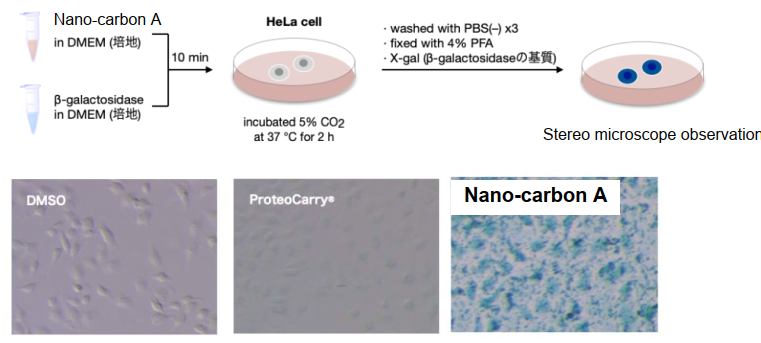Advantages
- Highly versatile as there are compounds for anionic and cationic protein transport.
Background and Technology
Technology for introducing biopolymers such as proteins and nucleic acids into cells is essential for genome editing and is an important tool in basic research and drug development. In particular, it would be efficient if proteins could be directly introduced into cells since there is no need for nucleic acid-mediated transcription, translation, modification, etc. However, proteins have more complex surface charges than nucleic acids and are therefore difficult to introduce. The intracellular transport methods for proteins that have been reported so far include microfluidic devices, membrane-penetrating peptides, cell-derived vesicles, synthetic nanoparticles for viruses, lipid nanoparticles, inorganic nanoparticles, and polymers, but these are not sufficient. .
We performed protein transport experiments into Hela cells using various nanocarbon compounds and found compounds that had intracellular transport effects on both cationic and anionic proteins. It showed the same or higher transport efficiency than commercially available protein cell introduction reagents (ProteoCarry, PULSin, etc.).」
 |
Patents
- Pending (Unpublished yet)
Principal Investigator
Kenichiro ITAMI (Institute of Transformative Bio-Molecules, Nagoya University)
Kazuma AMAIKE (Research Center for Material Science, Nagoya University)
Current Stage and Next Step
- Currently in the stage of identifying and conducting basic evaluation of nanocarbon compounds that have the effect of intracellular transport of proteins.
- We are recruiting research reagent companies to develop this nanocarbon compound and derivatives as protein intracellular transport agents.
Project.BK-04868


